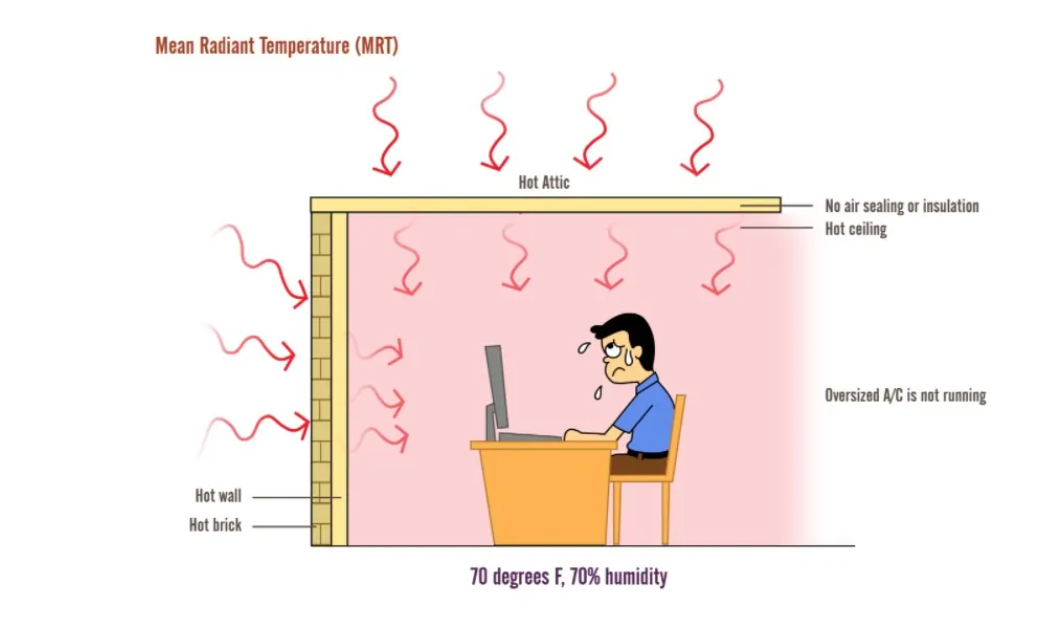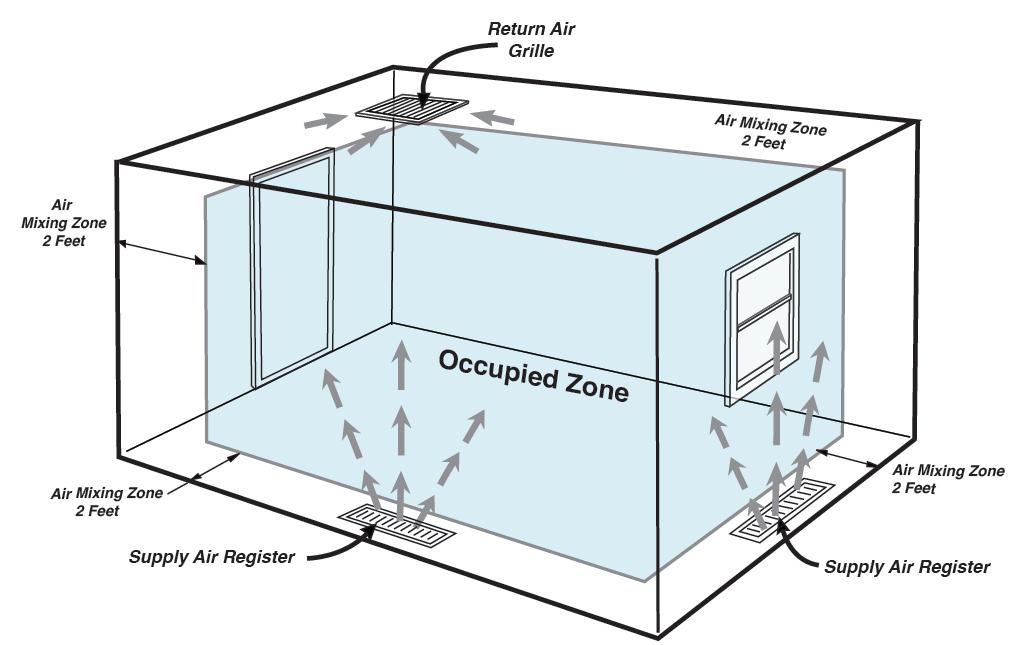Get Tech Tips
Subscribe to free tech tips.
5 Takeaways from Manual T

“Did you do a Manual J?”
“Did you run a Manual S on that?”
“What does Manual D say?”
If you’ve asked any design-related questions on the internet in the last several years, you’re probably familiar with these questions. But how does one “do” a Manual T? I bought Manual T last year and gave it a read, and like many of the ACCA manuals, it’s packed with a lot of great fundamentals. Many of us think of the ACCA design manuals as math books only needed for calculations, but they’re full of a lot of really practical guidance. Here are a few of my biggest takeaways.
1. Comfort Needs To Be Defined
What is the goal of Manual T? Well, it’s to keep people comfortable. So, how do we do that with a forced air system within a house? That is the ultimate question. There is not necessarily a perfect answer, but Manual T describes the best ways for us to do that.
In terms of supply outlets, our goal, as described in Section 10-1, is to:
- Keep air from stagnating in the occupied zone
- Keep air velocity low in the occupied zone
- Keep noise levels acceptable
- Offset drafts
- Ensure that high-velocity airstreams don’t collide
- Keep high-velocity air from hitting walls or ceilings
- Don’t “short-circuit” air between supply and returns
The temperature is just one piece of the comfort puzzle. Do people really like it when their AC blows air on them or makes them turn up the TV volume? The temperature could be perfect, but the people could be more comfortable. It just takes a little work to figure out how to make that happen.
2. You Can’t Fix Everything With Air Conditioning
I know—it’s a tough pill to swallow. Manual T breaks it to you gently by introducing the idea of Mean Radiant Temperature. We have a full-length article on this very topic, but essentially, MRT is a way to “measure the effect of the inside surface temperatures” (pages 1-3). Surface temperatures have a large impact on human comfort. We are going to have a hard time keeping people comfortable if we don’t consider the building that we are trying to condition. That can be intimidating because we already have so much to learn as HVAC contractors. But we need to understand that making someone super comfortable is going to be impossible if there is no insulation in the attic or walls.

Manual T puts it this way:
“Laboratory tests show that surface temperatures are as important as room air temperature to overall comfort. In fact, researchers suggest that increasing or decreasing surface temperatures 1 degree is the same as increasing or decreasing room air temperature 1 degree in terms of comfort achieved.”
Manual T, pg 1-2
3. Don’t Blow Air On People
Manual T asserts that blowing air directly into a room and creating drafts on people is not necessary for comfort. Or, as ACCA trainer Ed Janiowak so directly puts it: “Don’t blow air on people.” People shouldn’t feel a burst of cold air when the system comes on. We can entrain the stale or stagnant air in a room into the high-velocity supply air and then use the natural convection of the room to continue that mixing.

This is called the “Coanda effect,” and it describes the phenomenon where a stream of fluid (air) will “stick” to the ceiling. Our goal is to mix air properly and keep it out of the occupied zone, and we can use this effect to let the air ride across the ceiling and create proper mixing. If we don’t follow the guidance here, we can end up with patches of stagnant air in the room. Is it possible that some of the comfort complaints we’ve gotten are related to improper supply registers?

4. Returns Don’t Mix Air
“Relocating returns cannot cure poor air distribution problems.”
Manual T, Section 7-2
Manual T references research showing that after 1-2 feet, returns have no influence on air mixing. Supply ducts have a much bigger influence on air mixing due to their velocity. Returns are needed for pressure relief within a room so that the supply air you’re pumping in has somewhere to go (ideally, back to the piece of equipment that sent it into the room.) If you’re curious about what kinds of problems can be created by pressure imbalances, look no further than the writing of Genry Garcia.
5. Avoid Short Returns

Unwanted sound generation can come from return ducts that are too short or directly in line with the equipment. Manual T recommends two turns to minimize noise. If you have a noisy or whistling return, try taking off the grille and see if the sound goes away. Then, if it does, consider a grille with more free surface area or a larger return. If the equipment, in combination with the duct system, is causing the noise, consider adding additional turns.
An amazing resource on this subject is any of David Richardson’s writings in the “Duct Dynasty” series. Many of those can be found here.
—Matt Bruner











Comments
To leave a comment, you need to log in.
Log In